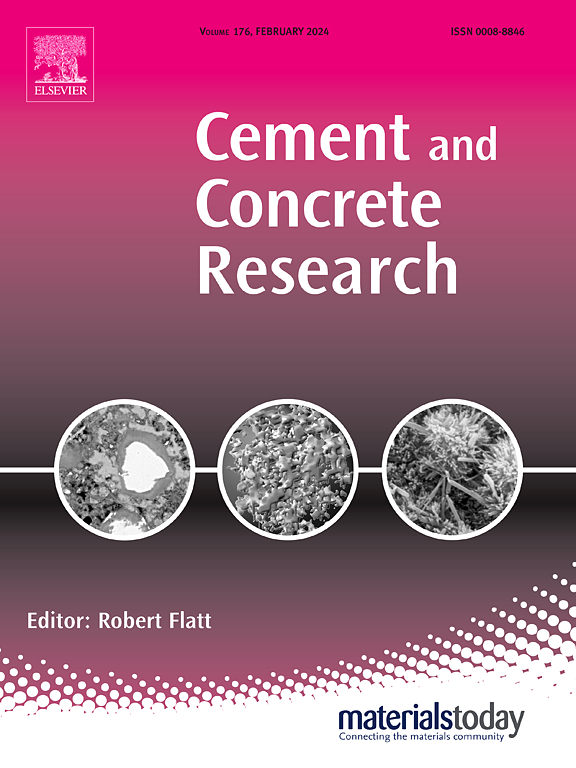Hierarchical pore structure for enhanced carbonation in basic magnesium sulfate cement: Mechanisms from modification to post‑carbonation evolution
IF 10.9
1区 工程技术
Q1 CONSTRUCTION & BUILDING TECHNOLOGY
引用次数: 0
Abstract
Basic magnesium sulfate cement (BMSC) contains excess MgO causing volume instability, limiting its applications. Although forced carbonation stabilizes MgO into carbonates, it compromises strength by transforming strength-contributing phases. This study presents a forced carbonation strategy based on hierarchical pore regulation. We constructed a multi-scale pore network from nano to macro scale, optimizing CO2 diffusion channels and carbonation product deposition space through synergy of basalt fiber and recycled wood fiber. The system exhibits a three-stage mechanism during forced carbonation: pressure-driven dissolution, filling-directed reconstruction, and self-regulating evolution. Under this mechanism, the developed carbonated bio-based magnesium sulfate (CBMS) cement overcame post‑carbonation limitations and exhibited increases of 79.3% and 19.1% in compressive and flexural strength respectively through the synergistic effect of fiber toughening and carbonation filling. The coupling mechanism between hierarchical pore structure evolution and carbonation behavior further achieved a 215.3% increase in carbonation degree and a 59.9% reduction in global warming potential.
碱式硫酸镁水泥中碳化强化的分级孔隙结构:从改性到碳化后演化的机制
碱式硫酸镁水泥(BMSC)含有过量的氧化镁,导致其体积不稳定,限制了其应用。虽然强制碳化使MgO稳定为碳酸盐,但它通过改变强度贡献相而降低了强度。本研究提出了一种基于分层孔隙调节的强制碳酸化策略。我们构建了从纳米到宏观的多尺度孔隙网络,通过玄武岩纤维和再生木纤维的协同作用,优化CO2扩散通道和碳化产物沉积空间。该体系在强制碳化过程中表现出三个阶段的机制:压力驱动的溶解、充填导向的重建和自我调节的演化。在此机制下,碳化生物基硫酸镁(CBMS)水泥克服了碳化后的限制,通过纤维增韧和碳化填充的协同作用,其抗压强度和抗折强度分别提高了79.3%和19.1%。分层孔隙结构演化与碳酸化行为的耦合机制进一步实现了碳酸化程度提高215.3%,全球变暖潜势降低59.9%。
本文章由计算机程序翻译,如有差异,请以英文原文为准。
求助全文
约1分钟内获得全文
求助全文
来源期刊

Cement and Concrete Research
工程技术-材料科学:综合
CiteScore
20.90
自引率
12.30%
发文量
318
审稿时长
53 days
期刊介绍:
Cement and Concrete Research is dedicated to publishing top-notch research on the materials science and engineering of cement, cement composites, mortars, concrete, and related materials incorporating cement or other mineral binders. The journal prioritizes reporting significant findings in research on the properties and performance of cementitious materials. It also covers novel experimental techniques, the latest analytical and modeling methods, examination and diagnosis of actual cement and concrete structures, and the exploration of potential improvements in materials.
 求助内容:
求助内容: 应助结果提醒方式:
应助结果提醒方式:


